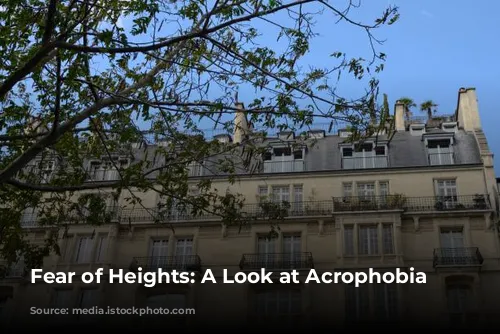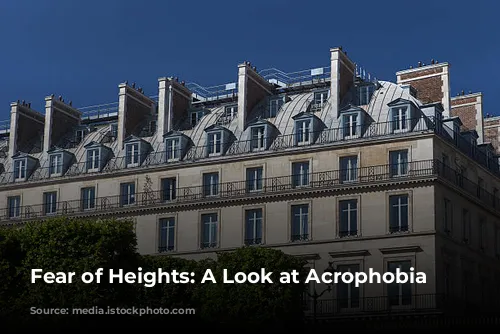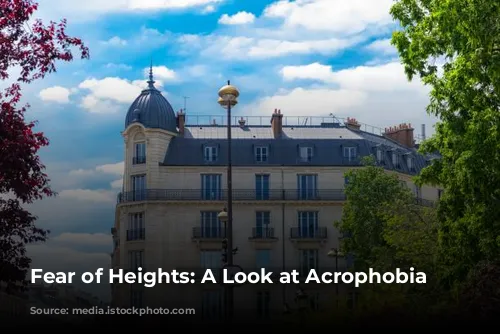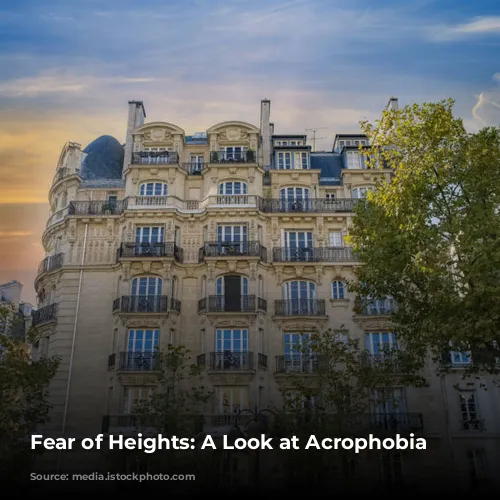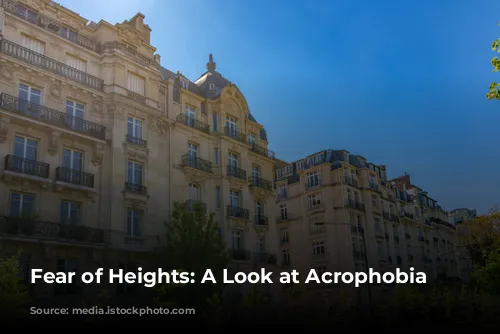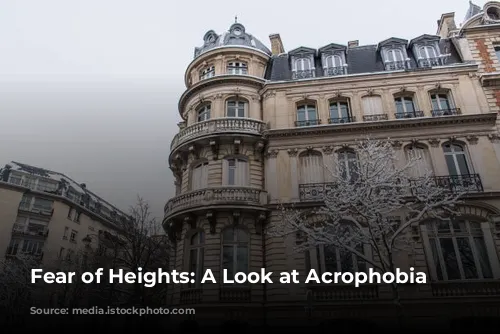Acrophobia, often referred to as the fear of heights, is a common phobia impacting a significant portion of the population. Studies reveal that approximately one in twenty people struggle with this disorder, a fear that can trigger intense anxiety, panic, and distress, potentially disrupting daily routines.
This article delves into the nature of acrophobia, exploring its causes, symptoms, diagnosis, and treatment options. By understanding the intricacies of this phobia, individuals can gain valuable insights into managing and overcoming their fear of heights.
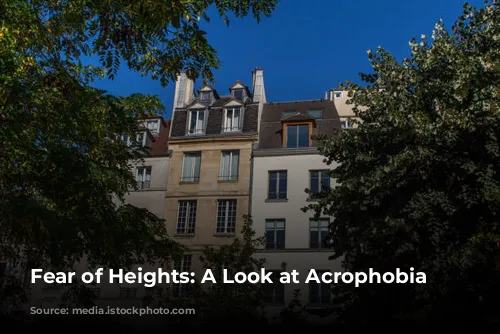
Understanding Acrophobia: Fear of Heights
The core of acrophobia lies in an irrational and intense fear of heights. Even the thought of a high place can evoke significant anxiety and, in some cases, even lead to a full-blown panic attack. This fear is classified as a specific phobia within the Diagnostic and Statistical Manual of Mental Disorders (DSM-5), categorized as a natural environment type of phobia.
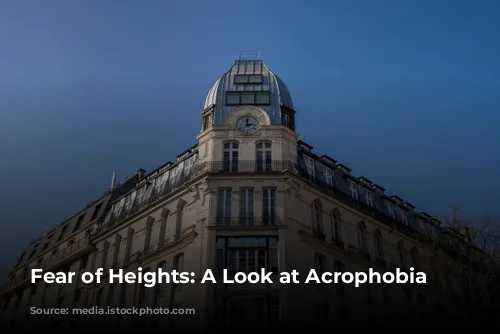
Symptoms of Acrophobia: Physical and Psychological Manifestations
The hallmark symptom of acrophobia is the experience of intense anxiety and panic when confronted with heights. While some individuals may only feel fear when exposed to extreme heights, others may experience anxiety even at moderate elevations.
The symptoms of acrophobia can be categorized into two main groups: physical and psychological.
Physical Symptoms:
- Increased heartbeat and sweating
- Chest pain or tightness
- Dizziness and impaired balance
- Shaking and trembling
- Nausea and lightheadedness
Psychological Symptoms:
- Intense fear and anxiety
- Panic attacks
- Avoiding heights at all costs, even if it restricts personal choices
- Paralyzing fear of being trapped at a high altitude

Causes and Risk Factors: Unraveling the Origins of Acrophobia
The development of acrophobia is often linked to traumatic experiences involving heights. These experiences could include:
- Falling from a high place
- Witnessing someone else fall from a high place
- Experiencing a panic attack or other negative event while at a high altitude
However, it’s crucial to acknowledge that acrophobia can also develop without any identifiable cause. Certain risk factors can increase the likelihood of developing this phobia, including:
- Family history of phobias or acrophobia: Genetic predisposition can play a role.
- Learned response: Observing a role model’s fear of heights can contribute to the development of the phobia.
- Evolved navigation theory: This theory suggests that natural selection has shaped human perception of height, leading to a heightened sensitivity to potential dangers.
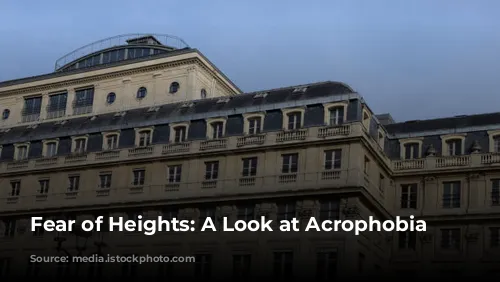
Diagnosis: Seeking Professional Assessment
For a proper diagnosis, it’s essential to consult a mental health professional. They can assess the specific symptoms and determine if they meet the criteria for acrophobia. The diagnosis process may involve:
- Physical examination: Ruling out any underlying medical conditions.
- Psychological evaluation: Assessing the severity of the fear, its impact on daily functioning, and the presence of other phobias.
The diagnostic criteria for acrophobia typically include:
- Active avoidance of heights: This avoidance significantly disrupts daily routines.
- Excessive worry about encountering heights: This worry consumes a considerable amount of time and negatively impacts daily life.
- Intense anxiety, panic, and paralyzing fear: These reactions are triggered by heights.
- Persistent symptoms for at least six months: The symptoms have been present for a substantial duration.
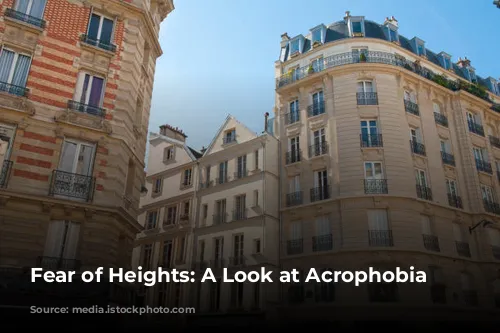
Treatment Options: Overcoming the Fear of Heights
Treating acrophobia usually involves a combination of therapeutic techniques and medication:
Therapeutic Interventions:
- Cognitive Behavioral Therapy (CBT): This therapy helps identify and challenge negative thoughts and behaviors associated with heights.
- Systematic Desensitization: This technique involves gradually exposing individuals to heights in a controlled environment, starting with low-intensity situations and progressing to higher levels.
- Exposure Therapy: Similar to systematic desensitization, this therapy involves direct exposure to the fear trigger, allowing individuals to confront their fear and learn coping mechanisms.
- Eye Movement Desensitization and Reprocessing (EMDR): This therapy uses eye movements to help individuals process traumatic memories related to heights.
Medications:
- Antidepressants: These medications help regulate mood and reduce anxiety.
- Anti-anxiety medications: These medications provide temporary relief from anxiety symptoms.
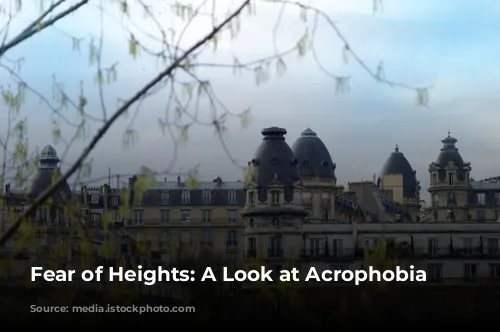
The Importance of Seeking Help: A Path Towards Recovery
If acrophobia is interfering with your daily life and negatively affecting your well-being, seeking professional help is crucial. While facing your fears can be challenging, remember that mental health disorders are treatable and manageable.
Taking steps towards recovery can lead to a more fulfilling and enriching life. Seeking therapy, joining support groups, and taking prescribed medications (if necessary) can help you gain a deeper understanding of your condition, build stronger relationships, and develop coping mechanisms to manage your fear of heights effectively.
